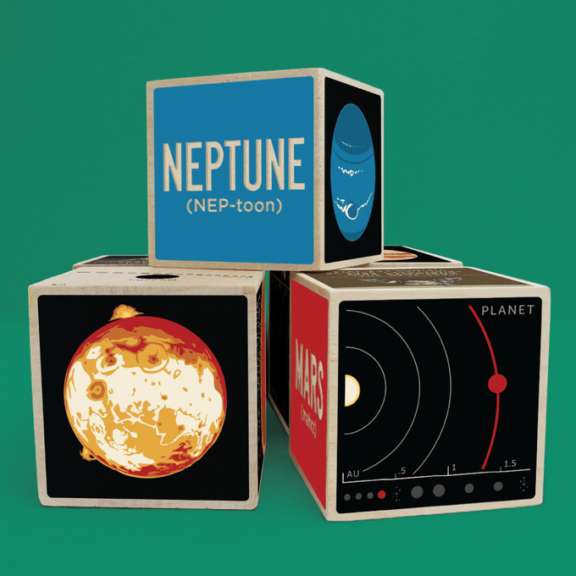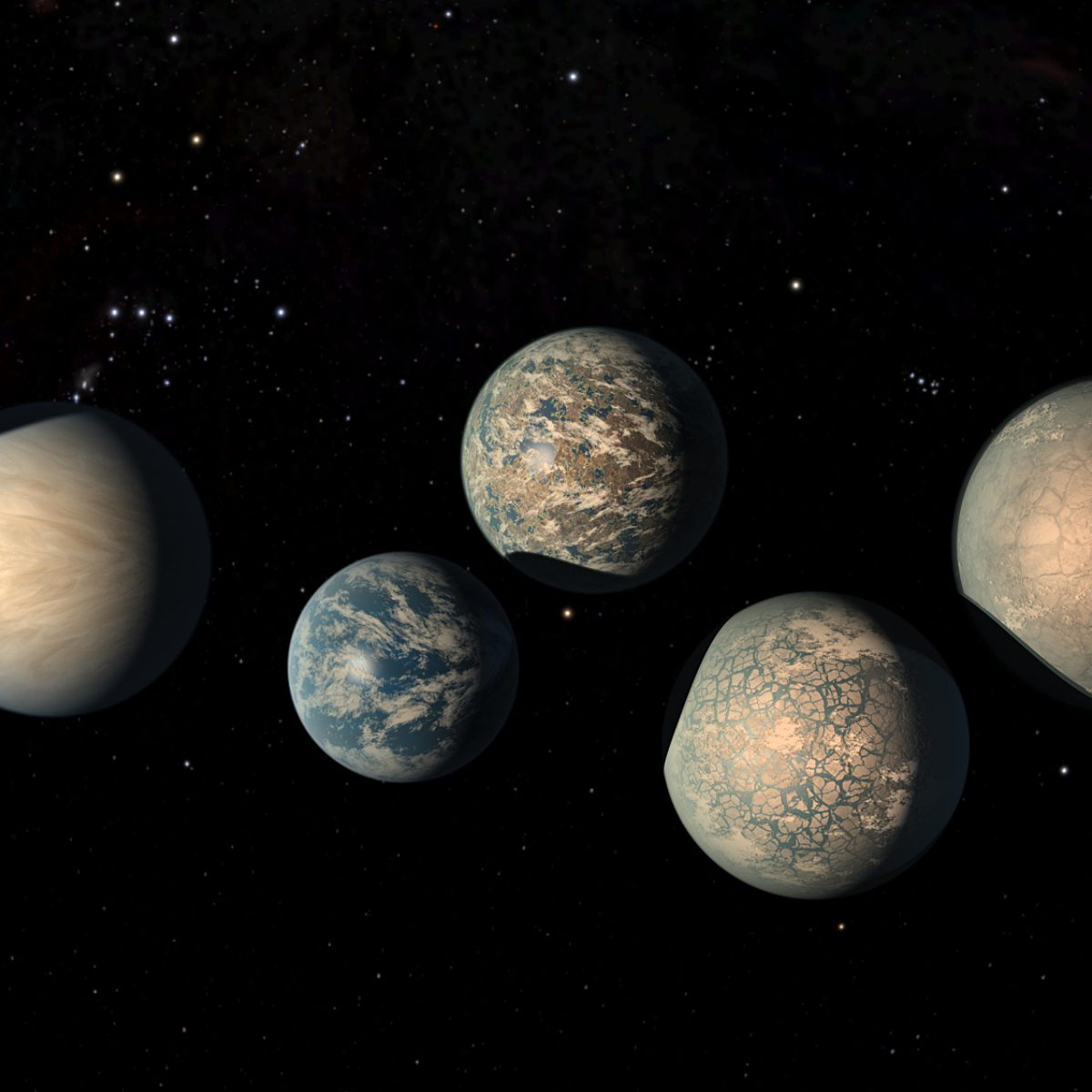What Is A Planet?
It's right there in our name: The Planetary Society. But what is a planet? This seemingly simple question is the subject of much debate. We at The Planetary Society love all worlds and advocate for their exploration, whether they’re big or small, hot or cold, traveling alone or orbiting another world.
As with all words, the meaning of “planet” has evolved over time, and will continue to change in the future. What “planet” means partially depends on who is talking and what definition they find most useful. Before we discuss definitions of the word, let’s consider the diversity of worlds that have been called planets in the past.

A short history of planets
“Planet” is a word used by the ancient Greeks to describe stars, visible to the naked eye, that moved in relation to the fixed, background stars. The word "planet" comes from the Greek word "planetes," which means "wanderer," and likely has more ancient origins. We’ll never know when humans first noticed that some stars moved while most did not, nor what name they first called those wandering stars.
The ancient Greeks believed that Earth was at the center of the universe, and the planets—which included the Sun and Moon—revolved around us on fixed, concentric spheres. Over time, philosophers and scientists from Copernicus to Kant to Hubble modified this perspective until Earth was viewed as just one of many planets, orbiting an average star that, itself, orbited the distant center of the Milky Way, which was one of many galaxies.
While Mercury, Venus, Mars, Jupiter, and Saturn have been known since antiquity, Uranus wasn’t discovered until 1781, orbiting 20 astronomical units (AU) from the Sun, doubling the size of the then-known solar system. Between 1801 and 1808, astronomers found 4 new worlds much closer to home: Ceres, Pallas, Juno, and Vesta, all orbiting the Sun between Mars and Jupiter, at distances ranging from 2 to 4 AU. By the time a fifth world, Astraea, was discovered in 1845, astronomers referred to them as “asteroids,” “small planets,” or “minor planets,” and considered them to be a subset of planets, just like rodents are a subset of mammals.
The planet Neptune was discovered in 1846, expanding the size of the known solar system again, this time to 30 AU. Pluto was also named a planet when it was discovered in 1930. Pluto’s orbit was highly unusual: very elongated, markedly tilted, and in a dance with Neptune such that Pluto orbits the Sun twice for every 3 times Neptune does. The rhythmic motions occasionally bring Pluto even closer to the Sun than Neptune (such as from 1979-1999), but the 2 planets are never near each other in space, nor will they ever be. At first, Pluto’s mass was estimated to be similar to Earth’s, but those estimates shrank over time. We now know it is only 0.2% as massive as Earth.
By the 1950s, scientists began to agree that asteroids formed differently and were intrinsically different than the rest of the planets. Improvements in the understanding of the origin of planetary systems led scientists to realize that Jupiter’s powerful gravity had so perturbed this region of space that no worlds larger than Ceres have been able to survive intact there. Because of this distinction, usage of the term "small planets" and "minor planets" to name asteroids plummeted. Asteroids were no longer considered a subset of planets, and most people alive today grew up learning there were 9 planets: Mercury, Venus, Earth, Mars, Jupiter, Saturn, Uranus, Neptune, and Pluto.
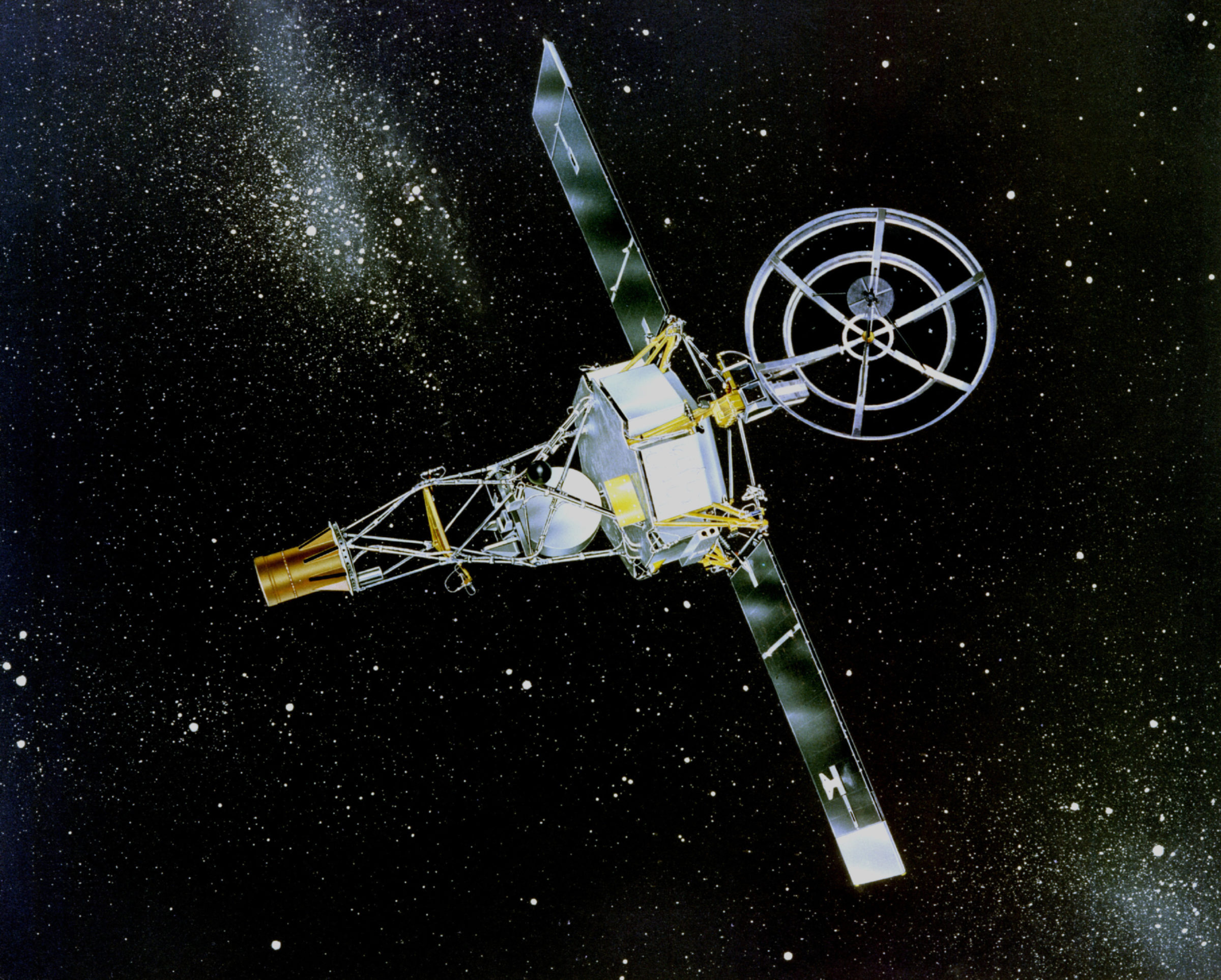
Robotic spacecraft reveal a diversity of worlds
Starting in 1959, we began visiting other planets, moons, asteroids, and comets with spacecraft. Space missions turned these worlds from points of light into places. Suddenly, it wasn’t just astronomers studying other worlds: geologists, atmospheric scientists, physicists, and other scientists could look at the landforms, atmospheres, and interiors of other worlds, and compare them to each other and to Earth.
Mercury, Venus, the Moon, and Mars all had clear similarities to Earth: they are rocky worlds possessing volcanoes, fractured crusts, and (for Mars and Venus) atmospheres with weather and climate. Asteroids proved to be lumpy worlds that appeared very different from planets, as predicted. The giant planets—Jupiter, Saturn, Uranus, and Neptune—were clearly distinct from everything else, with their gassy envelopes, ring systems, and families of moons. And to many scientists’ surprise, these giant planets’ moons were quite planetlike: Jupiter’s Io had active volcanoes, Europa and Ganymede had fresh icy surfaces crisscrossed by grooves, and Saturn’s Titan had a thick atmosphere. These satellites all joined Earth’s Moon as targets of interest to people who called themselves planetary scientists.
Suddenly, it was possible to have a career as a planetary geologist. (A few people, noting that “geo-” signifies Earth, advocated for calling the study of Moon and Mars rocks “selenology” and “areology.” However, the idea of naming the same science differently for each world that had rocks never caught on, so “geo-” is used in the general sense.)
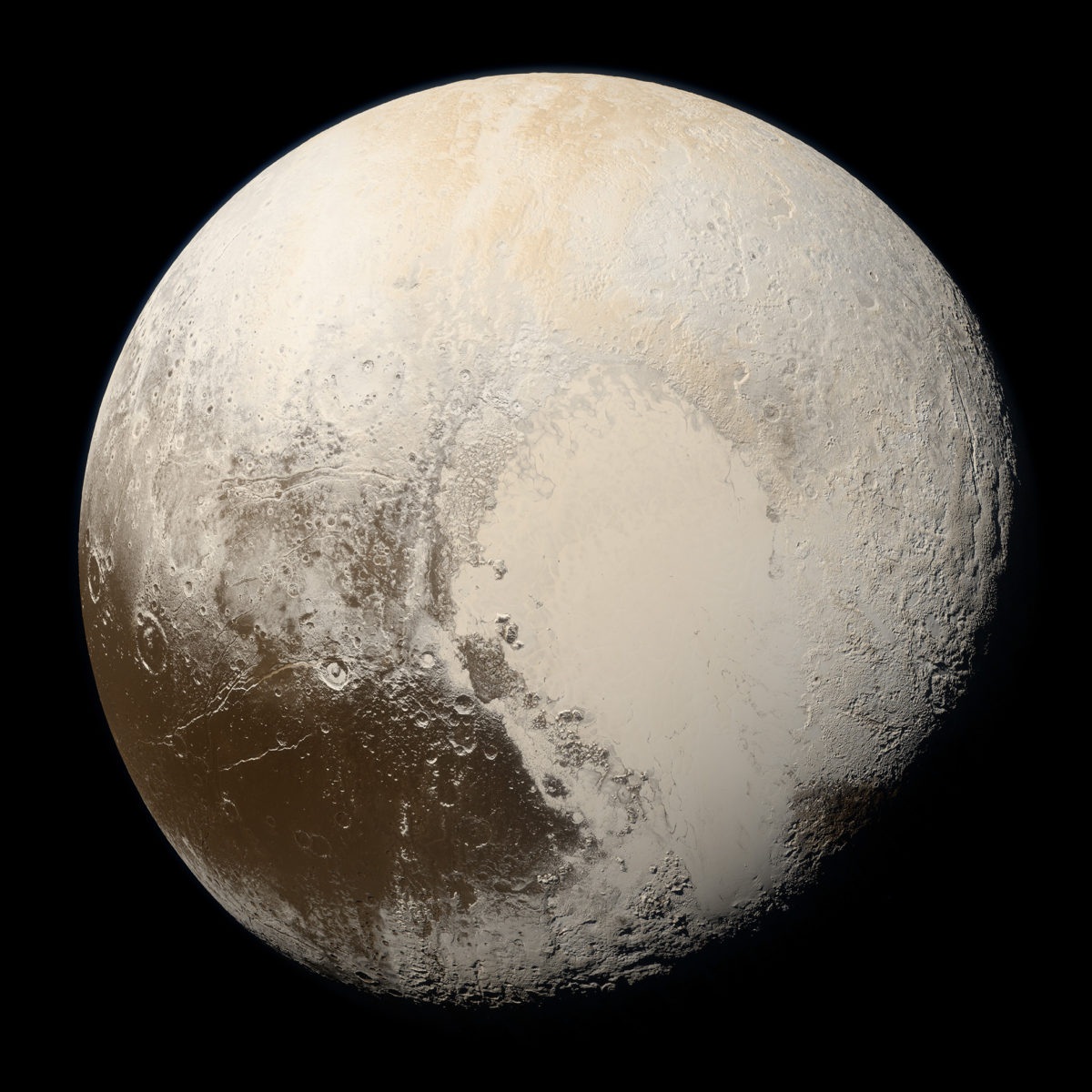
Discovery of the third zone of the solar system
In 1992, humanity’s view of the solar system began to expand again when astronomers found another object in Pluto’s neighborhood, 1992 QB1, now named Albion. The next year, 5 more such worlds were discovered. By the turn of the millennium, more than 200 worlds were known to travel within the Kuiper belt—the region of our solar system beyond Neptune that stretches from Neptune’s orbit at 30 AU to a sharp edge at 50 AU. (Why is the edge sharp? We don’t yet know.)
Some of these newly found worlds were quite large, bigger than Ceres. All early-discovered Kuiper belt objects were fainter and therefore smaller than Pluto, but in 2005 a team of scientists announced the discovery of a world we now call Eris that was brighter than Pluto. For many years it seemed that Eris was larger than Pluto, but we now understand that although Eris is more massive than Pluto, it’s just slightly smaller. Other trans-Neptunian worlds that are definitely larger than Ceres are Makemake, Haumea, Gonggong, Pluto’s moon Charon, and probably Quaoar and Sedna.
Was Eris a planet too? If it was, what about other large Kuiper belt worlds like Makemake and Haumea? What about Sedna, which lies beyond the Kuiper belt and hints at the possibility of more undiscovered, very distant worlds, one or more of which could turn out to be even larger than Pluto? If Eris was not a planet, then how could Pluto still be called a planet? Or perhaps Eris and all the other newly discovered round worlds should be considered planets?
We could classify the worlds of the solar system in many different ways: by size (mass or diameter), composition (metal, rocky, icy, gassy, or combinations thereof), location (orbiting near or far from the Sun, alone or circling another world), whether or not it has an atmosphere, magnetic field, oceans, weather, present-day geologic activity, and more. What combination of qualities makes something a planet? If a scientist is interested in impact craters or subsurface oceans, does it matter if a world orbits the Sun or another planet?
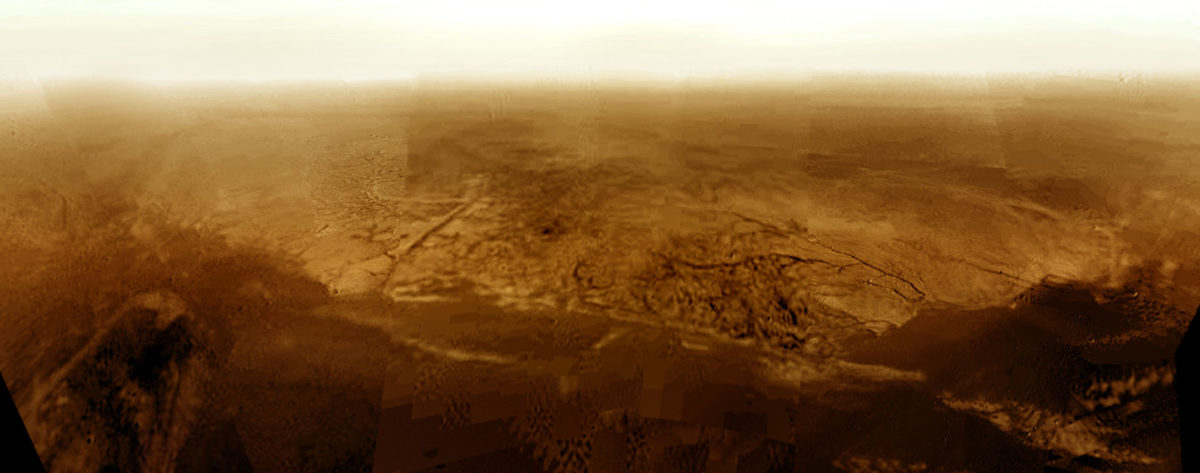
An Astronomer’s Definition of “Planet”
The International Astronomical Union (IAU) is an international organization with more than 10,000 members that fosters collaboration among astronomers. Among the IAU’s activities is the organization of committees of its members that assign names to celestial bodies, providing a consistent terminology used across scientific publications by most of the world’s astronomers who publish in English.
Following the discovery of Eris in 2005, the IAU attempted to clear up the confusion surrounding planethood by voting on a new definition for planets at its General Assembly in 2006. At the end of the General Assembly, a majority of the remaining 500 members still present for the vote passed the IAU planet definition resolution. The resolution said that a planet must:
- Orbit the Sun.
- Be round or nearly round due to gravity.
- "Clear the neighborhood” around its orbit.
Furthermore, the IAU-adopted definition stated that if an object meets the first two criteria but not the last, and is also not a satellite of another planet, it is a “dwarf planet” and that “planets and dwarf planets are two distinct classes of objects.” That is, dwarf planets are not planets.
The first 2 criteria (orbit the Sun and be round) are easy to understand, but the third has caused confusion. The IAU resolution did not include a definition of what it meant to “clear the neighborhood.” Most astronomers interpret the phrase to mean that a planet is gravitationally dominant in its region of space. Another way to put this is: a planet is a world that has dramatically more mass than anything else that orbits near it. Indeed, if you graph the mass of the solar system’s worlds against their distance from the Sun, there are 8 worlds in our solar system that stand dramatically above everything else.
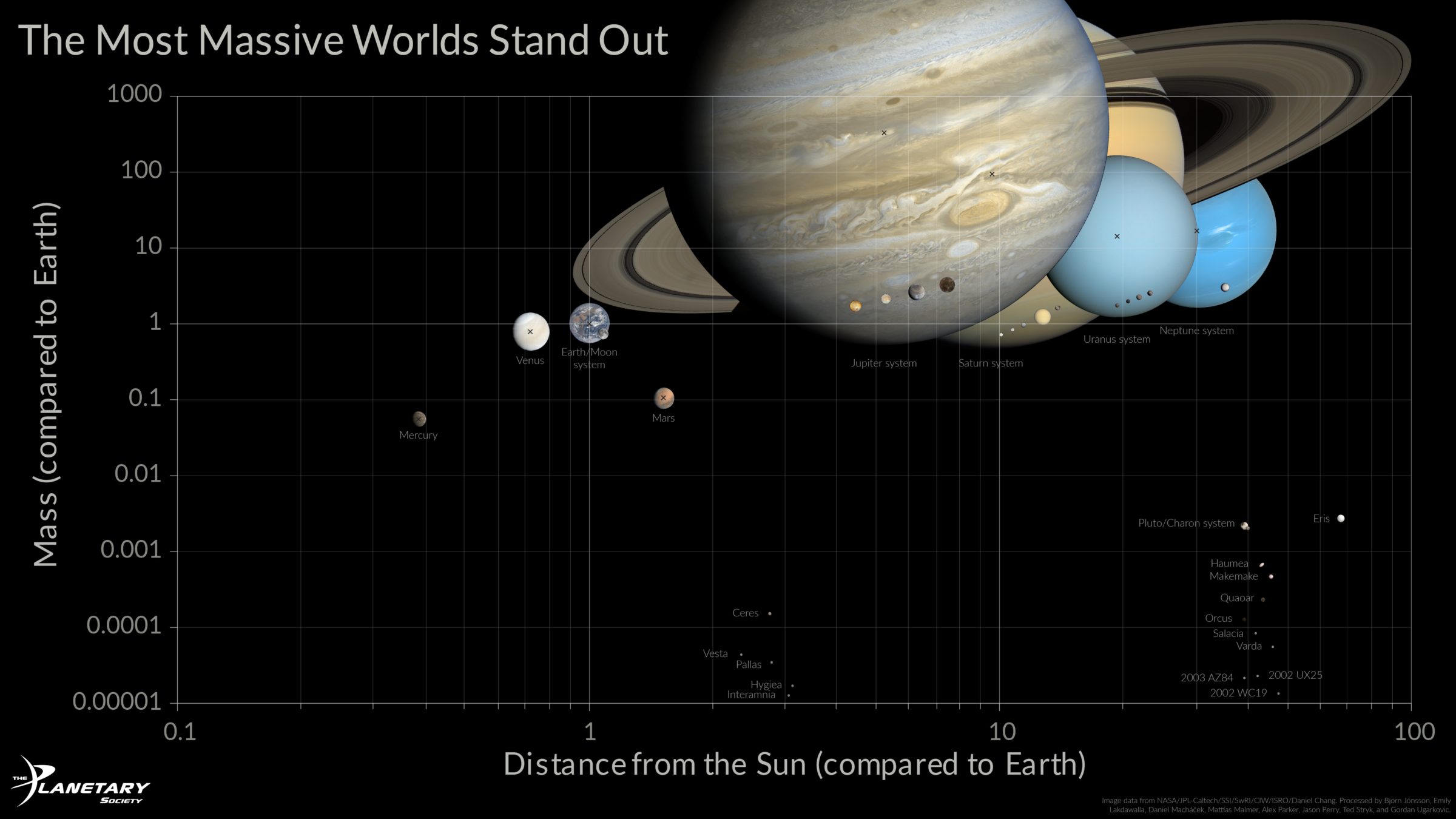
For example, although many trans-Neptunian objects (including Pluto) have orbits that cross Neptune’s, Neptune is so massive and has so much greater gravity than any other nearby object that it controls the positions and periods of these smaller worlds’ orbits. According to this astronomical definition, Neptune is a planet and these other worlds are not planets (though they may be dwarf planets). Likewise, Earth’s orbit is constantly crossed by asteroids and meteoroids—we are hit by meteoroids every day—but Earth is so comparatively large that no asteroid that strikes Earth will affect Earth’s orbit in a noticeable way, making Earth a planet and the Earth-crossing asteroids not planets.
There are two other aspects of the IAU definition that are worth mentioning:
- The IAU definition specifically applies only to our own solar system. It does not apply to the worlds that orbit other stars, known as exoplanets.
- IAU planethood depends on a world’s closeness to the Sun: smaller worlds close to the Sun, like Mercury, are able to sweep their orbits effectively, but if Mercury were located far from the Sun, it might not clear its neighborhood and would thus be a dwarf planet.
Many people, including those who felt passionately that Pluto should be considered a planet because of its special place in popular culture, disputed the IAU’s 2006 definition of planethood. Others pointed out some complications of applying it. These arguments are well summarized in an article written by David Grinspoon in 2015, explaining the logic behind a simpler definition, which would be the same as the IAU definition, minus the “clear the neighborhood” requirement: “A planet is a gravitationally rounded object that is orbiting a star” and is not itself a star.
The Geoscientist's Perspective on Planets
Not only astronomers study planets, of course. Now that spacecraft routinely explore our solar system, other kinds of scientists can study planets, too. Planetary scientists are interested in a world’s physical properties and history. A planetary volcanologist studies volcanoes whether they’re on Earth, Venus, or Io; an atmospheric scientist might study polar weather on Mars, Titan, Saturn, or Pluto. All these types of science can be described with the umbrella term “geoscience”—the science of worlds.
It doesn’t necessarily matter to a geoscientist interested in planetary processes like volcanism and weather, if a world orbits the Sun or a planet. You’re a planetary scientist even if you mostly study moons. So a geoscientist might want a different definition of “planet” than one that’s useful to astronomers. Geoscientists care about the intrinsic properties of a world like its surface landforms, mass distribution, and composition more than the location of the world.
Mass is the most useful predictor of the kinds of physical processes that can happen on a world, regardless of where it is in the solar system. Composition, location, and history are also important, but you can predict a lot about a world if you only know its mass. At the large end of the mass scale, pretty much everyone agrees that there’s a sharp boundary between planets and stars. Stars are objects that are (or used to be) capable of nuclear fusion. Planets are too small ever to have fused atoms. But what is the boundary between planets and not-planets at the small end of the size range? Put another way, what’s the geophysical difference between a lumpy asteroid like Bennu and a small planet like Mercury?
To figure out where that boundary lies, and how geoscientists might classify planets, it helps to know what planetary scientists have learned about the variety of worlds in our solar system, and which ones experience planetary processes like volcanism, tectonics, and weather.

Mass Matters
Small-mass objects like most asteroids can’t hang on to atmospheres and don’t have internally driven geology. They are often loosely-assembled piles of rubble with large, empty void spaces between their component blocks. They don’t make their own geology; change on small asteroids is caused by external forces like impacts and solar radiation. They are not considered to be planets by anyone.
With enough mass, a world’s self-gravity can crush itself under its own weight, closing up the pore spaces found in rubble-pile asteroids. Gravity acts to pull materials from high places to low ones, smoothing out highs and filling in lows. The more mass an object has, the more its gravity is able to reshape it. Larger worlds tend toward a spherical shape, perhaps with a bulge at the equator due to its rotation.
This transition from lumpy to round happens between about 400 and 600 kilometers, depending on a world’s composition. An object that is mostly made of ice will crush itself and become round at a smaller diameter than a world mostly made of rock, because ice is weaker than rock. Saturn’s moon Mimas (about 400 kilometers across) is the smallest icy world we have visited that is round, though Neptune’s slightly larger icy moon Proteus (420 km across) is non-spherical. Asteroid 2 Pallas (about 510 kilometers) is the smallest rocky world that appears to be nearly round.
Unfortunately, there are no worlds closer than the Kuiper belt with diameters between those of Pallas and Ceres (a mixed rock-ice dwarf planet about 950 kilometers in diameter), so we can’t see how the lumpy-to-round transition plays out across different types of icy and rocky worlds without much better knowledge of the shapes of very distant Kuiper belt objects.

Worlds in the size range from Saturn’s moon Mimas (about 400 kilometers) to Earth (12,700 kilometers) are made mostly of iron, silicate rock, and water ice, but the relative proportions of these components depend on where in the solar system the world formed. Worlds that formed close to the Sun are mostly rock and metal, while those that formed far from the Sun are mostly rock and ice.
Round worlds experience geology driven by internal heat. The heat drives geologic activity like volcanism and tectonics. Larger worlds can maintain geologic activity for billions of years. Worlds with an internal molten layer may have an internally generated magnetic field. Worlds with atmospheres can have climate and weather.
For worlds with more mass than Earth, another planetary transition happens. The four largest worlds of our solar system—Neptune, Uranus, Saturn, and Jupiter—were massive enough to collect large amounts of ices and gases as they formed. Their materials are squeezed to unimaginable pressures at very high temperatures. These worlds may have no solid surfaces at all, moving from gas to liquid to more exotic, high-pressure forms of matter like superionic water and metallic hydrogen deep inside them. Their materials create powerful magnetic fields.
Our solar system doesn’t contain any bodies with masses between those of Jupiter and the Sun. But we know from studying stars that, at a mass of 10 or 15 times that of Jupiter, the pressures and temperatures inside a world become so large that they can begin to fuse atoms. Things that fuse atoms are usually considered to be stars, not planets. The very smallest atom-fusing entities, called brown dwarfs, are not quite stars, and run out of their fuel fairly quickly. We have none of these almost-stars in our solar system, but brown dwarfs are common in our galaxy. It takes 75 times the mass of Jupiter for a star to ignite long-lasting fusion. Our own star, the Sun, is medium-sized, about 1000 times the mass of Jupiter.
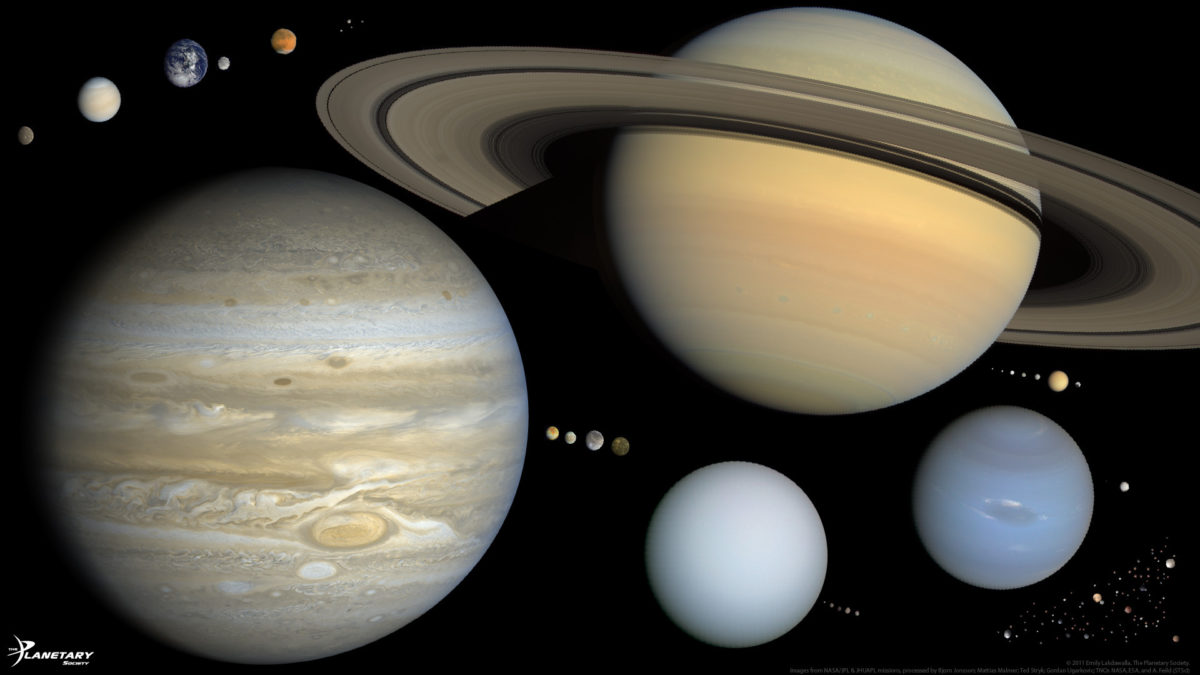
What Are the Geophysical Planets?
Therefore, the word “planet” as used in planetary geology implies: a planet is a world too small to be a star (meaning it never produced nuclear fusion) and is big enough to be round due to its self-gravity. The transition from not-round to round is gradual, unlike the sharp transition from planet to star.
From the Sun out to Neptune, there are about 30 worlds that satisfy this definition of “planet”:
- The 8 big ones: Mercury, Venus, Earth, Mars, Jupiter, Saturn, Uranus, Neptune.
- The 18 or 19 round moons: Earth’s Moon; Jupiter’s Io, Europa, Ganymede, and Callisto; Saturn’s Mimas, Enceladus, Tethys, Dione, Rhea, Titan, and Iapetus; Uranus’ Miranda, Ariel, Umbriel, Titania, and Oberon; Neptune’s Triton and possibly Proteus.
- A few of the 4 largest asteroids: Ceres and possibly Pallas and Hygeia, but possibly not Vesta.
Beyond Neptune, it’s harder to count because it’s difficult to measure diameters of worlds that are so small and far away. Here is a partial list of trans-Neptunian planets that have been discovered as of February 2020 that are probably large enough to be round, though in many cases their diameters and roundness are uncertain. There are definitely at least 30, and possibly more than 100—with lots more that remain undiscovered.
- 5 that are empirically proven to be round: Pluto, Charon, Eris, Makemake, and Haumea.
- 6 that are known to be large enough that their roundness is virtually certain: Gonggong, Quaoar, Sedna, Orcus, 2002MS4, and Salacia.
- 17 that are probably larger than 600 kilometers in diameter and so are very likely to be round, only a few of which have been formally named: Varuna, Varda, Ixion, G!kunll'homdima, Chaos, 2002AW197, 2003AZ84, 2013FY27, 2002UX25, 2004GV9, 2005RN43, 2014UZ224, 2005UQ513, 2018VH18, 2014 EX51, 2015RR245, and 2010RF43.
- More than 100 that are estimated to be in the size range of 400 to 600 kilometers, many but not all of which might be round.

Types of Geophysical Planets
Geoscientists most often lump worlds into classifications according to composition, which influences what kinds of processes happen there. Our solar system contains many different kinds of planets:
- Gas giants (Jupiter and Saturn) have similar compositions to the Sun: mostly hydrogen and helium. They have extensive systems of rings and moons. Deep inside, the hydrogen is under such intense heat and pressure that it becomes metallic and conducts electricity. The movement of this metallic hydrogen is what helps gas giants generate enormous, strong magnetic fields. Metallic hydrogen may also have dissolved the original rocky cores of gas giants; there may be no distinct rocky or metal center.
- Ice giants (Neptune and Uranus) are smaller and have less hydrogen and helium than the gas giants. They, too, have extensive systems of rings and moons. They contain hydrogen and helium but are made mostly of water, methane, and ammonia. These substances, which planetary scientists call “ices,” are in gaseous form near the visible surfaces of the ice giants but further down are compressed into an exotic liquid–solid substance called superionic water. Ice giants are not massive enough to create the pressures necessary for metallic hydrogen to exist, so they probably have large rock and metal cores.
- Terrestrial planets (Earth, Venus, Mars, Mercury, the Moon, Io, and possibly Pallas and Vesta) are made mostly of metal and rock and have (or had) volcanoes that erupt liquid rock. They have very little hydrogen, helium, or ices, because most of these worlds formed too close to the Sun for those materials to solidify on their surfaces. In the case of the inner planets like Earth, comets and asteroids have delivered icy materials like water to their surfaces. Europa formed with some ice; Io probably did, too, but has lost it due to its internal heat and Jupiter’s magnetic field stripping it all away.
- Dwarf and Satellite planets, or “icy planets” (Ceres, possibly Hygiea, all the other giant-planet moons, and trans-Neptunian objects) are made mostly of a mix of rock and ices. Some have distinct metal cores; most don’t. Some are differentiated and some are not. They have solid icy surfaces, have (or used to have) internal saltwater oceans, and have (or used to have) volcanoes that erupt liquid water. A few have atmospheres and weather; on such cold worlds, it’s possible for clouds, rain, rivers, and ice to be made of methane or nitrogen.
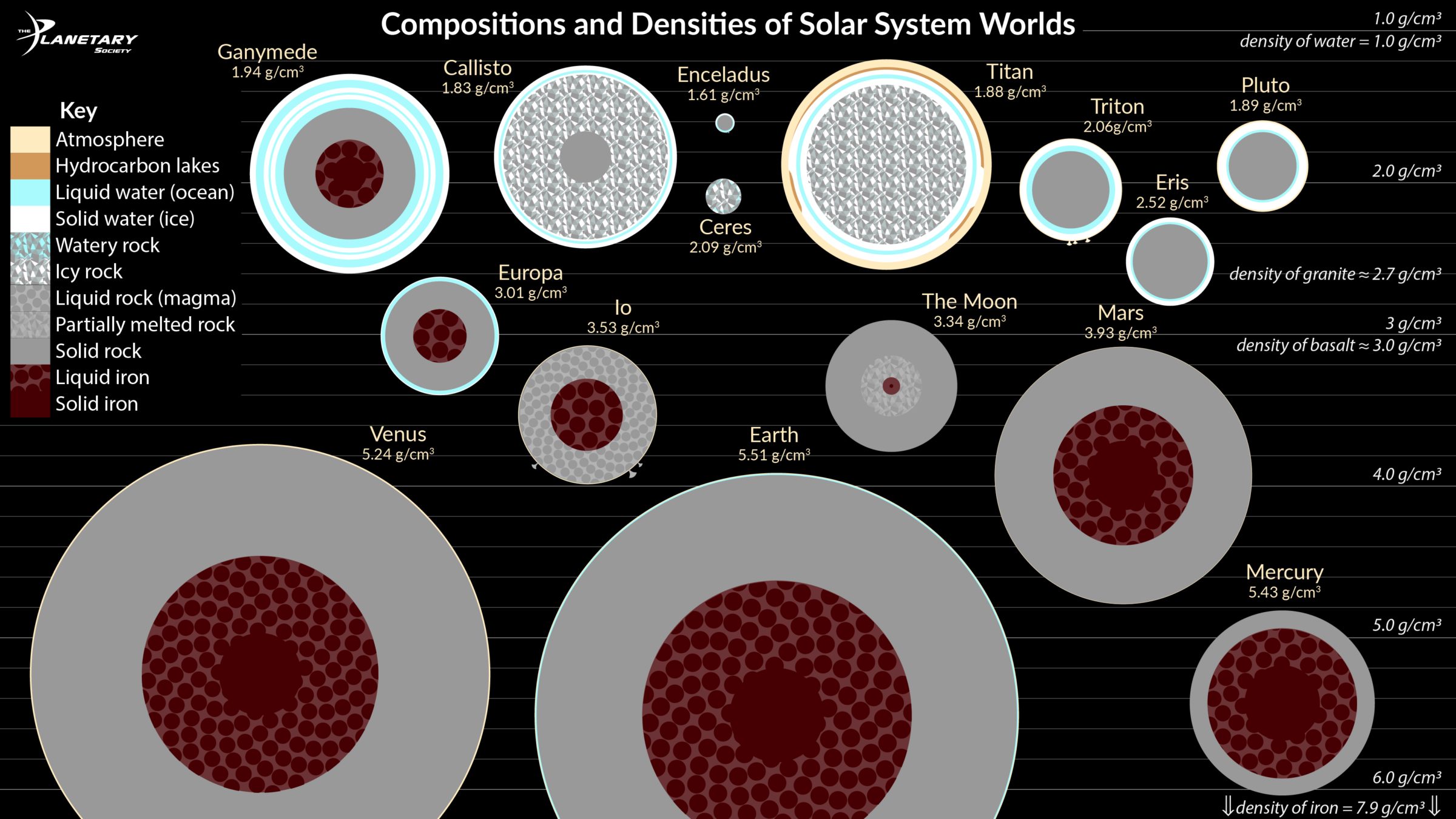
There is a lot of overlap between terrestrial and icy worlds. Some that are usually thought of as icy worlds, like Eris and Europa, are actually mostly rock and metal with only a thin veneer of ice and/or water on top. Others, like Ceres, have their ice and rock all mixed together, not in distinct layers. Many icy worlds have internal saltwater oceans. Most metal-rich worlds, including Europa and Ganymede, have solid-metal inner cores and liquid-metal outer cores just like Earth, but some, like Io and Mercury, have nearly fully molten cores. The diversity is impressive.
There are two “missing” sizes of planets that our solar system does not contain, but which are common in exoplanetary systems. Super-Earths and sub-Neptunes (terms coined and widely used by astronomers and planetary scientists) occupy a range of masses from 2 to 10 times that of Earth. They have an enormous variety of densities and probably an enormous variety of compositions. There might be such planets that are mostly rocky, rocky with gas layers, rocky with deep oceans, and more.
Exoplanets, worlds beyond the Solar System
Some exoplanets could be habitable and are prime targets in the search for life beyond Earth.
Proposed Geophysical Planet Definitions
Immediately after the IAU took their vote on their planet definition, planetary scientists like Mark Sykes pointed out that the definition did not take into account “the intrinsic nature of planets that sets them apart from other categories of objects,” in other words, their physics. Since then, 2 proposed geophysical planet classifications have appeared in the conference literature, though neither have received formal peer review:
- In 2013, David Russell defined a planetary classification taxonomy relying primarily on composition (rock, ice, and/or gas), designed to apply both to solar system planets and exoplanets. His taxonomy could be supplemented by applying dynamical classes (that is, by grouping things according to whether they orbit the Sun or planets, inside or outside a belt of other objects) in the case of the worlds of the solar system. He also proposed the idea of supplemental classes for those planets that include biology, and those that do not.
- In 2017, Kirby Runyon and coauthors defined a geophysical planet definition: “A planet is a sub-stellar mass body that has never undergone nuclear fusion and that has sufficient self-gravitation to assume a spheroidal shape adequately described by a triaxial ellipsoid [be round] regardless of its orbital parameters.” They argued to professionals that the proposed definition is better for planetary science education and took their argument to the public, including in an article published in Astronomy magazine in 2018.
Accuracy Can Be Fun!
The Planetary Society's Emily Lakdawalla worked closely with Chop Shop Studio to support the creation of a new product: Planetary Blocks.
More to Explore
Many of the most compelling questions that we have about the science and exploration of our solar system—Where did we come from? Are we alone in the universe? Can we prevent dangerous asteroids from impacting Earth?— may be answered by visiting worlds that have never been named “planets.” Large or small, with or without a solid surface, active or quiescent, stormy or hazy, orbiting a star or another world, all these places are worth exploring.
Resources
The Different Kinds of Exoplanets You Meet in the Milky Way
Lava worlds. Hot Jupiters. Earth 2.0 candidates. Here's a rundown of the major types of exoplanets.
- Harry McSween and coauthors published an excellent introductory textbook in 2019 titled Planetary Geoscience that is suitable for advanced high school or introductory college level courses, or for space enthusiasts
- Mike Brown’s regularly updated list of trans-Neptunian object diameters indicates which are certainly, likely, or just possibly round and are thus dwarf planets
- The JPL small-body database browser can be used to visualize the orbits of trans-Neptunian objects as well as asteroids, centaurs, and periodic comets, and the page for each object includes physical data like mass and diameter (if known)
- The JPL Horizons database hosts lists of physical parameters of planets, satellites, and certain smaller bodies
- Phil Metzger’s: “The Reclassification of Asteroids from Planets to Non-Planets” examines the history of the word “planet” in scientific discourse
- Kirby Runyon and coworkers presented their planet definition at the Lunar and Planetary Science Conference in 2017 and again at the Pluto System After New Horizons meeting in 2019. Here is their 2017 poster presentation
- David Russell’s geophysical planet classification is an unpublished manuscript, but he did publish a peer-reviewed article pointing out that Earth’s Moon meets all requirements of the IAU’s planet definition
- Ron Ekers presented to the IAU’s centenary symposium in 2018 about how some obscure rule changes for IAU meetings helped to cause considerable behind-the-scenes drama surrounding the status of Pluto and the planet definition
Acknowledgments
This page was first published on 21 April 2020. It was written by Emily Lakdawalla and other Planetary Society staff members. We thank Jim Bell, Kirby Runyon, Paul Byrne, and David Grinspoon for their helpful reviews.


 Explore Worlds
Explore Worlds Find Life
Find Life Defend Earth
Defend Earth



